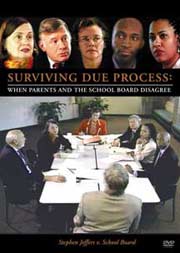|
|
Last week, we watched Stephen Colbert of Comedy Central interview Malcolm Gladwell. Mr. Gladwell is a writer for The New Yorker and the author of two best selling books, The Tipping Point and Blink.
Mr. Gladwell was being interviewed about an article he wrote about IQ tests: "None of the Above: What I.Q. Doesn't Tell You." At the end of the interview, Colbert asked:
COLBERT: What's your IQ?
GLADWELL: I have no idea.
COLBERT: I know mine. My IQ is 95 - I got an A!
Is an IQ of 95 an A?
No! An IQ score of 95 (i.e., a standard score of 95) is at the 37th percentile (which is in the bottom half).
Although the Colbert Show is comedy, the interview caused us to ask how many parents know what their children's test scores mean. To design an educational program that meets your child's unique needs, you must use information from objective tests. To measure and monitor your child's educational progress, you must use objective tests and you must know what the scores mean.
If test scores look like code to you, don't despair. Learning about tests is easier than you think. The time you devote to learning now may change your child's life forever.
In this issue of the Special Ed Advocate, we will teach you about tests and measurements (statistics) and how to measure your child's progress or lack of progress. When you attend the next IEP or eligibility meeting, you'll be glad you did your homework!
Your knowledge may exceed that of other members of the IEP team. Share your newfound expertise - forward this issue to friends and colleagues.

Sign up free today! l Read previous issues |
|
| What is your Bell Curve IQ? |
Don't know? Take the Bell Curve Quiz to find out.

Two years ago, Johnny had a standard score of 85 on the Woodcock Reading Mastery test. His percentile rank was _____. On recent testing, his standard score was 70, which is a percentile rank of _______. His standard deviation on that test was _______.
On another test of reading skills, his oral reading rate was at the 16th percentile rank, which is the same as ______ deviations above / below (circle one) the mean.
On the Wechsler Intelligence Scale, his IQ fell from 115 to 85, from the ______ percentile rank to the _______ percentile rank.
What percent of children have a standard score of between 85 and 115? _______.
Answers
To get the answers to this test, send a blank email to
bellcurve@wrightslaw.com Be sure to type BELL CURVE IQ in the subject line. You'll receive an immediate auto response by email with the correct answers to the Bell Curve Quiz.
If you don't know the answers to this test now, don't panic. This quiz is a pre-test. After you read and master the information in Tests & Measurements for the Parent, Teacher, Advocate and Attorney, take the test again. You'll be surprised at your progress!
|
back to the top |
|
| Tests and Measurements for the Parent, Teacher, Advocate and Attorney |
"Knowing how to use the bell curve is more important than knowing the law."- Pete Wright
To be a successful advocate, you must learn about tests and measurements -- statistics.
In Tests and Measurements for the Parent, Teacher, Advocate and Attorney, Pete and Pam Wright teach you how to use statistics to measure progress or lack of progress -- change. You'll learn about the bell curve and how to use the bell curve. You'll also learn about -
- standard scores
- subtest scores
- percentile ranks
- standard deviations
- age and grade equivalents
- 'Closing the Gap'
As a parent, it is your responsibility to learn what these concepts mean. If you accept this responsibility, you will be in a position to play an active, informed role in planning your child's special education program.
Remember, the key to success is reading the material three times. Use a highlighter and make margin notes. After you read the article three times, take the Bell Curve IQ Quiz again. Compare your pre-test and post-test scores.
Surprised? Impressed? Proud of yourself?
Note: This article was revised and is consistent with IDEA 2004.
|
back to the top |
|
| Coming Soon! Wrightslaw WebEx Training on Tests and Measurements |
The next program in the Wrightslaw WebEx Training Series is "Learning about Tests and Measurements."

In this program, Pete Wright teaches you about statistics, what your child's test scores mean, and how to create powerful graphs of your child's progress.
If you subscribe to The Special Ed Advocate newsletter, you will receive an announcement when the new "Learning about Tests & Measurements" training program is available. Watch your email - the announcement will arrive soon!
"This is advocacy training at its best..."
"When my husband drove us home after your training program, I opened my laptop and learned how to make the bar graphs you demonstrated during the program. What an incredible difference it made in the history I was writing about my child's test results. His strengths and weaknesses stood out!"
More reviews of Wrightslaw WebEx training programs. |
back to the top |
|
|








